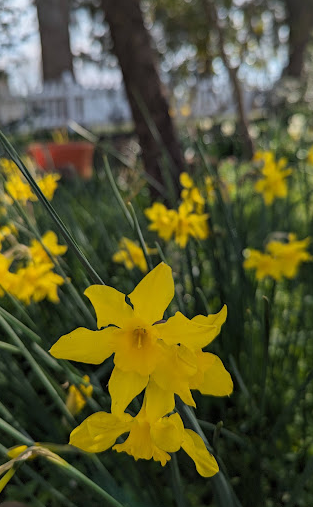Attracting Butterflies
- Clifford Brock
- May 10, 2023
- 2 min read
When creating a new garden or just inserting life into an old one, I feel it is important to also provide benefits to insects, particularly pollinators like butterflies. While bees get all the attention these days, butterflies also perform impressive feats as pollinators. And just as importantly, butterflies are beautiful and contribute movement and color to the landscape!

As we all should know, butterflies are just adult caterpillars. So it is important to consider not only sources of nectar but also host plants for various caterpillars or larvae. A host plant simply refers to the co-evolution between specific plants and caterpillars. For example, passion vines, the genus Passiflora, is the preferred food of the Gulf Fritillary caterpillar. The adults lay eggs on the leaves, and then the spiny orange larvae consume the leaves until they transition into adults. It is important to note that many of our forest trees and so-called "weeds" are host plants. So it is paramount to allow grasslands and forests to proliferate unmowed and uncut if we prioritize butterfly diversity.

Another host plant relationship you might not be aware involves our native tulip tree, Liriodendron. This tall hardwood tree is abundant in Georgia and not only makes a great shade tree, but it's one of the primary host plants for Tiger Swallowtails. These are the large yellow and black butterflies we see fluttering around our Zinnias.

Many plants provide nourishing nectar for butterflies. In addition to Zinnia, two of my favorites are the giant annual Mexican sunflower (Tithonia rotundifolia), and Rhododendron prunifolium (or plum-leaf azalea) which is our late-blooming orange-red native azalea. Here is a quick list of some of my other favorite butterfly plants: Bouvardia ternifolia, Joe-Pye-weed, Lantana, buttonbush, and purple cone flowers. Like all pollinator plants, it is best to grow single-flowered cultivars or straight species. Fancy double-flowering cultivars rarely offer anything for insects. So just be sure to include more "wild-looking" flowers in your garden.

Attracting butterflies is easy, just plant more of their preferred plants! Please encourage your friends and neighbors to leave patches of unmowed grass so that weeds can flower and seed. Plant more hardwood trees like oaks, hickory, and tulip tree. Even though we can't as individuals change the world, we can create "oases" or "refugium" for pollinators, and, more importantly, we can encourage others to do the same.




Comments